Welcome to all our new subscribers, many of whom came from a mention in While You Were Working, a daily news aggregator of interesting/off-beat news stories with a written-by-real-people vibe. Also, Substack recently launched a feature that allows me to see that subscribers to Natural Wonders hail from 45 states in the U.S. plus 64 other countries! I will choose to be extremely flattered by that information rather than paralyzed by imposter syndrome and fears of inadequacy. Fortunately, I have a distracting number of natural questions burbling in my brain for future issues…
Trees
by Joyce Kilmer
I think that I shall never see
A poem lovely as a tree.
A tree whose hungry mouth is prest
Against the earth’s sweet flowing breast;
A tree that looks at God all day,
And lifts her leafy arms to pray;
A tree that may in Summer wear
A nest of robins in her hair;
Upon whose bosom snow has lain;
Who intimately lives with rain.
Poems are made by fools like me,
But only God can make a tree.
There’s a reason poets write about trees. I love how small they make me feel, like an ant walking between towering blades of grass. They sway in the wind overhead, and yet they’re strong enough to support their own massive weight. Ever tried wrapping your arms around a log to move it just a few feet? Now multiply that times the height of a tree – that’s a lot of tonnage towering overhead.
Of course, some trees are bigger than others. I have a sort of love affair with big trees, and my understanding friends will patiently wait while I exclaim over particular trees on bike rides and hikes, posing with them like I’ve spotted a minor celebrity at Trader Joe’s.
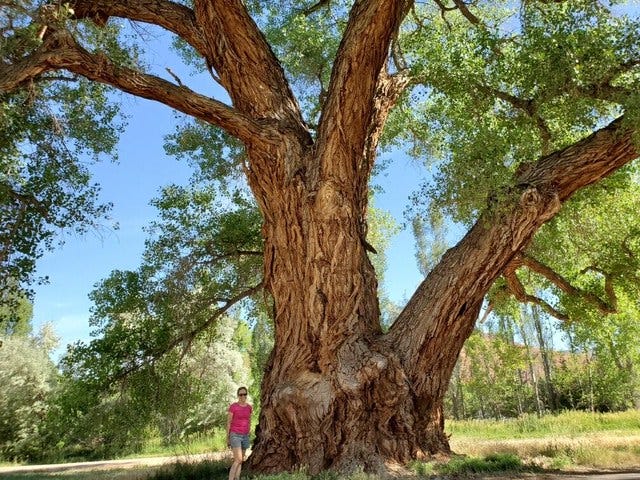
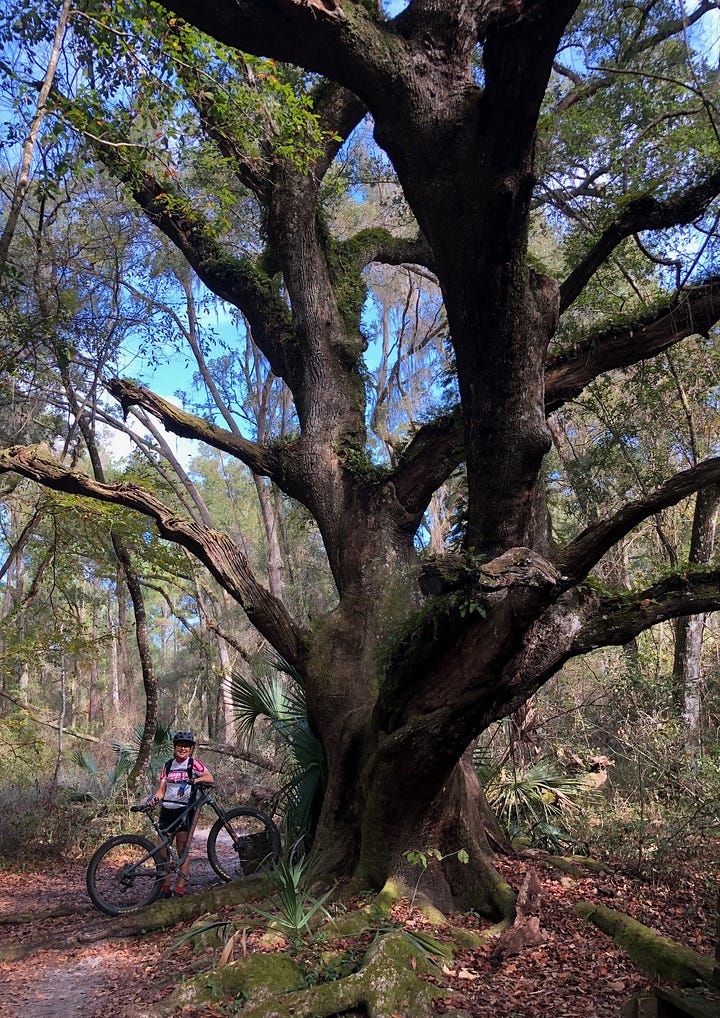
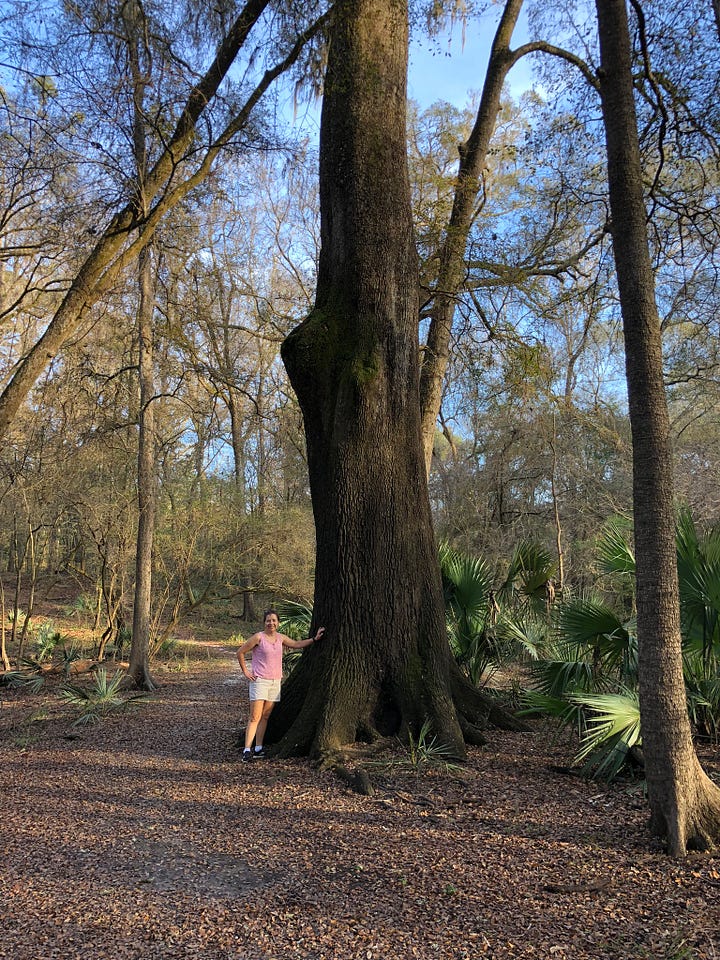
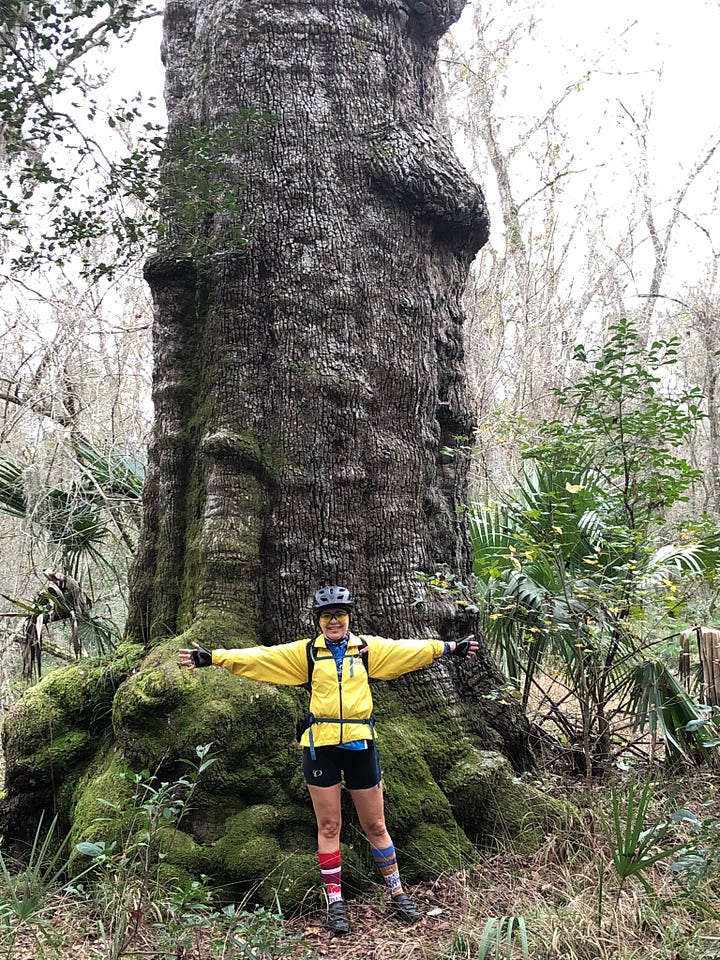
On one of these occasions, a friend wondered aloud if this large tree was a “first growth” tree, by which he meant “leftover from the time before our forests were laid bare by logging.” After a little research I discovered that most of our forests here in the U.S. are “second growth” (or third or fourth…) and there’s very little left of original, or “old-growth” forests.
Does that mean that everything was logged? Are there any stands of trees that remain intact, completely as they were hundreds of years ago? And if so, how do I find those areas? Is anyone keeping track of that?
Are there any old-growth forests left?
Before I even had a chance to dig into the history of logging and old-growth forests, a member of our hiking club mentioned a place intriguingly named “Valley of the Giants” about an hour’s drive away. Eighteen of us made the drive to an old forest service gate and after clambering over and under several (normal-sized) deadfall trees, we began to encounter the giants. These were massive tulip poplars, about 20 of them scattered over two miles of trail, that overshadowed the other trees around them:
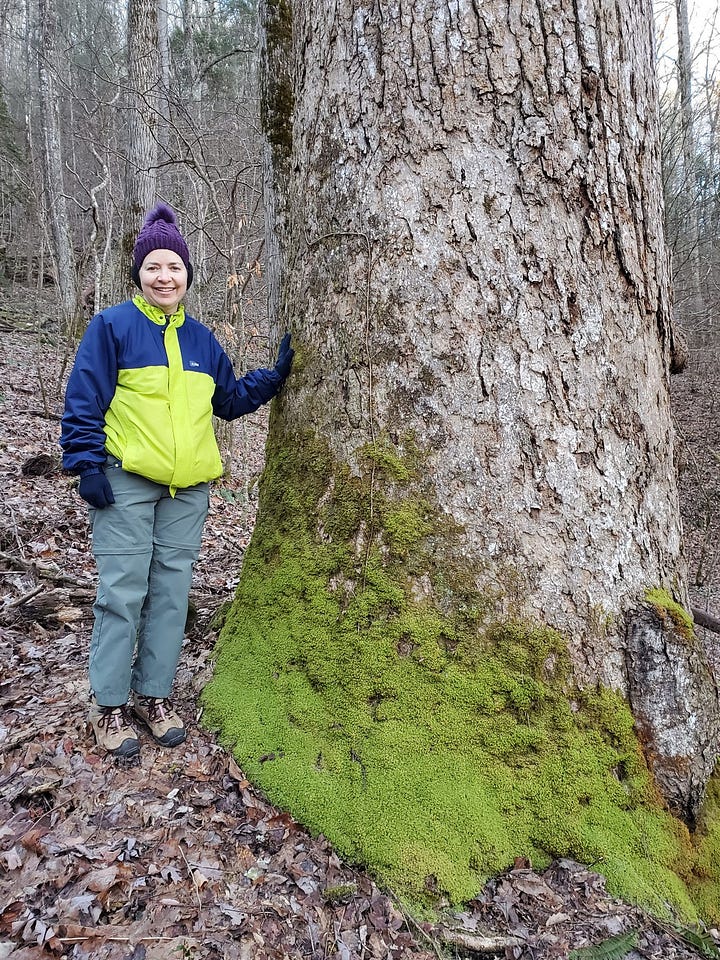
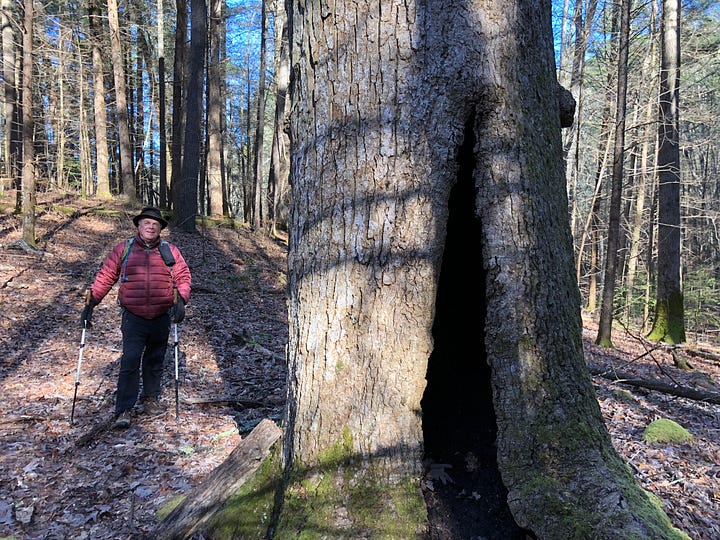
We measured the largest of them at 19 feet, 7 inches in circumference, which means (using the tree aging formula I wrote about in an earlier issue) it was around 225 years old:
Each of these Grandmother trees stood alone in the forest, at least 100 yards (but more often farther) from the next big tree. You can see in the picture above that most of the surrounding trees were fairly small. Was this because the area around the tree had been logged back at the turn of the last century? Why were these huge trees left undisturbed?
Beginning around 1880, timber companies moved into Georgia from the north and bought land from farmers for only a few dollars per acre. The larger companies practiced clearcutting, taking out every usable tree. They constructed “splash dams” on creeks, which were temporary dams that created ponds into which the cut logs were dumped. When enough water and logs had been collected, they burst the dam and the load of wood exploded downstream to the larger bodies of water for removal.




By 1909, within just 30 years, acres and acres of trees had been hand sawn and removed by oxen and horses from the southern mountains. Across the country, so much wood was being removed that people began to worry, and Theodore Roosevelt warned of a potential “timber famine.” In 1905 the national Forest Service was born, and in 1911 the Weeks Act allowed the government to begin purchasing private land with the goal of protecting and managing the forests that were left.
Fortunately, there were still some old-growth forests remaining at that time, though the Forest Service did continue logging them, just at a slower rate. Nowadays, if you want find old-growth forests you can check out the Old Growth Forest network to find forests in the U.S. or this Wikipedia page to find them elsewhere on the planet.
I’m not sure I’ve ever seen an old-growth forest, so I convinced my friend Beth on a frigid day last week to go bushwhacking near the headwaters of the Chattahoochee River, looking for what the Old-Growth Forest Network reported were several patchy acres of massive trees near the Appalachian Trail.
I wasn’t really sure what to expect, but in my mind, it would look something like this:
That is not what we found.
After hiking a couple miles in, we found the spring that is the source of the mighty Chattahoochee River, the body of water that is the drinking water for Atlanta, the kayaking/rafting playground of millions, and the basis of years of legal battles between Alabama and Georgia:
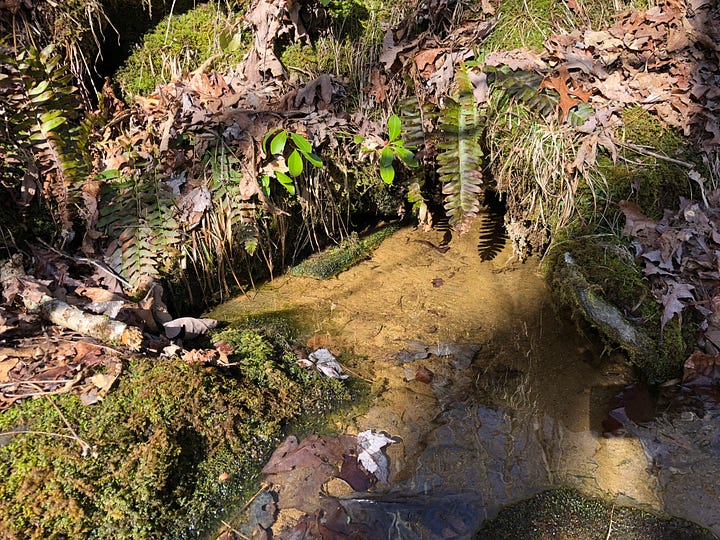
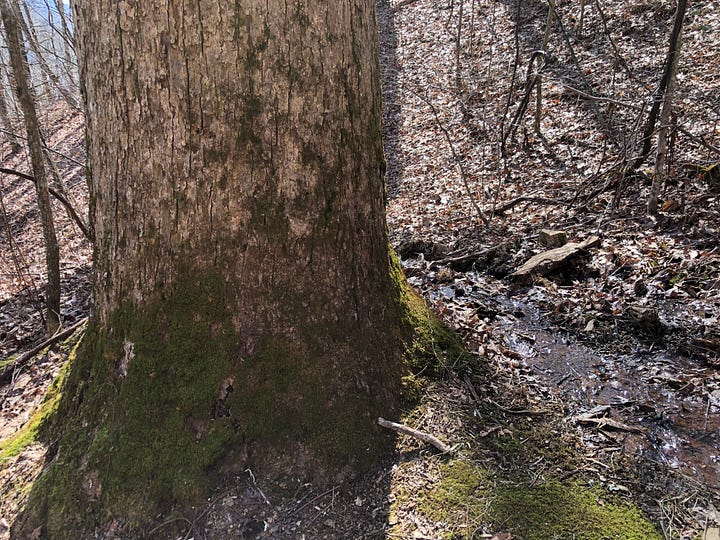
Beside this tiny spring was an enormous poplar 11 feet in circumference. It was the only tree of its size in the cove. We started bushwhacking through the undergrowth and about 100 yards away, around the corner and beside another spring tributary for the Chattahoochee, we found an even bigger poplar:
We measured and calculated it to be around 175 years old. From there, we began to find other large trees along with decaying trunks that must have fallen many years ago:
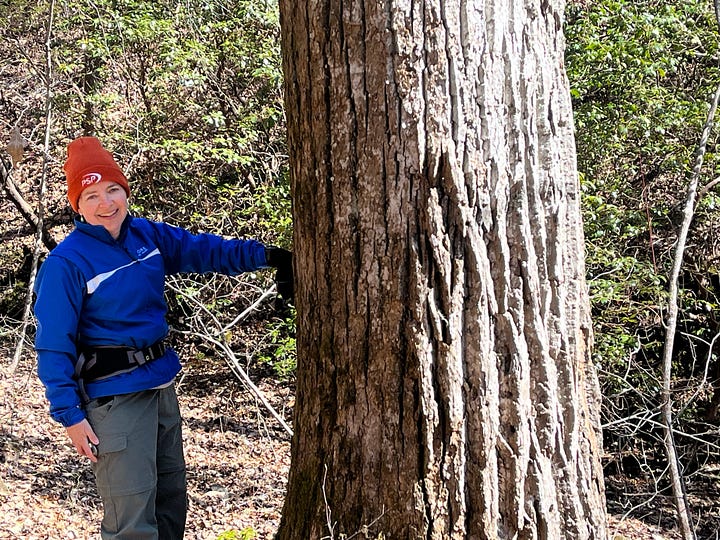
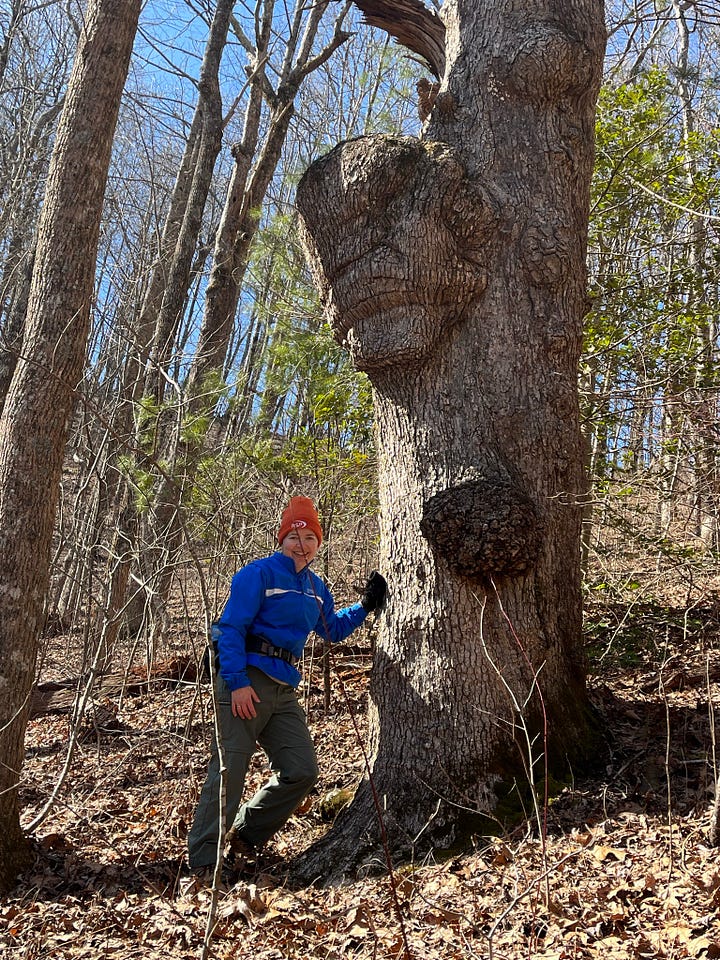
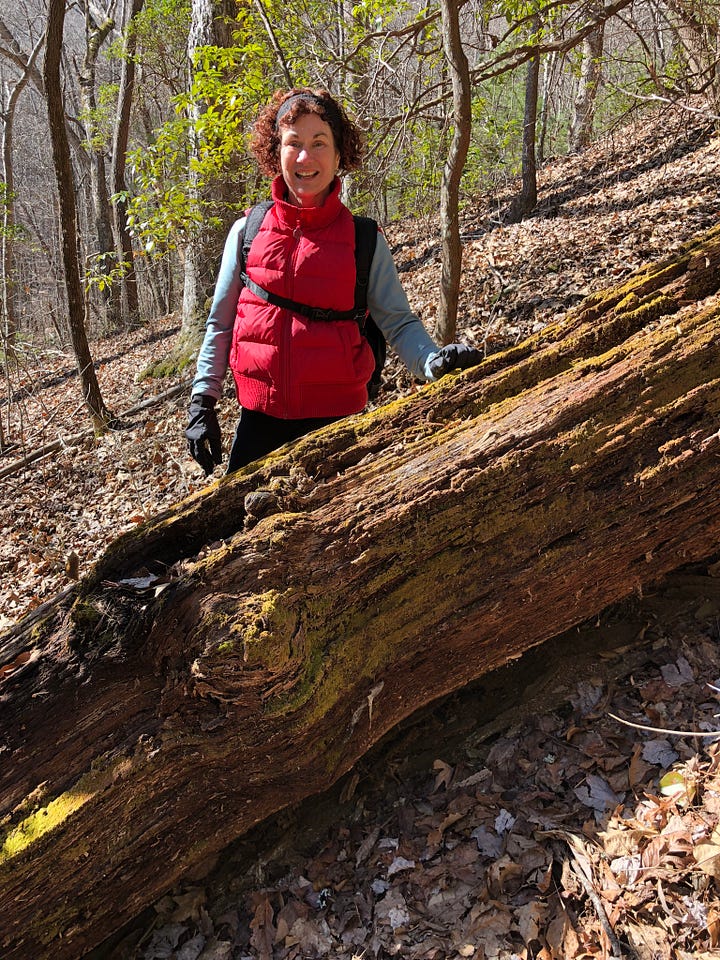
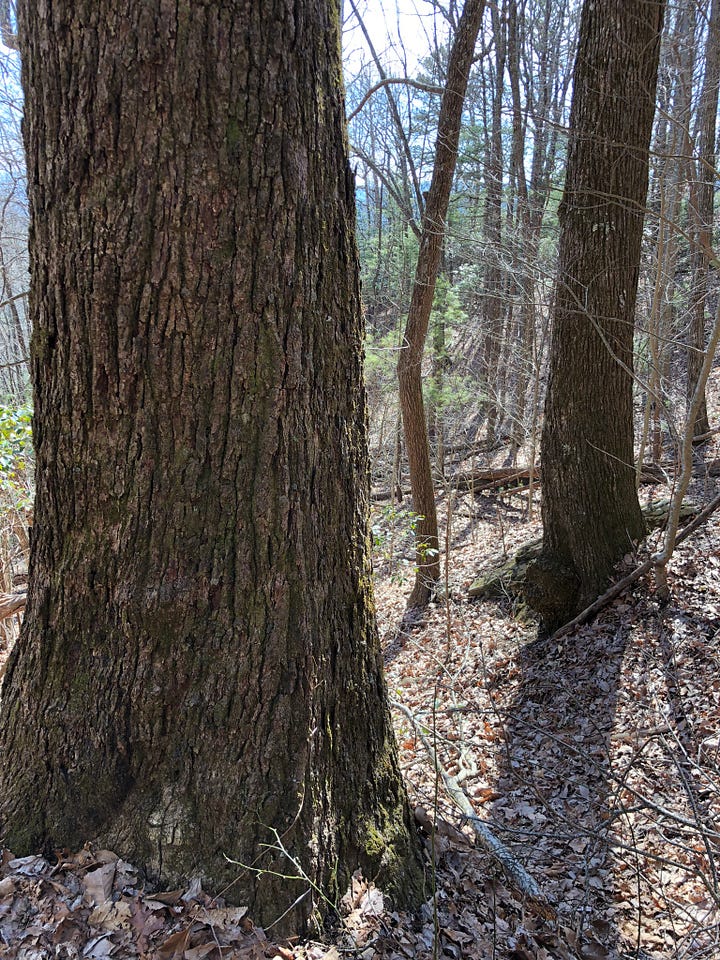
We slowly realized we were in the midst of the old-growth forest. But it didn’t look anything like I’d anticipated. It suddenly occurred to me – I’d thought old-growth would have ONLY enormous trees draped in moss, surrounded by decaying fallen comrades. I wasn’t prepared to see an entire range of tree sizes, including tiny saplings. But of course, that makes sense – a forest is a growing organism that supports every age of tree. In many ways it looked like any other section of forest, just with a few massive grandfather trees sprinkled here and there.
Here's what Wikipedia says to look for:
“Typical characteristics of old-growth forest include presence of older trees, minimal signs of human disturbance, mixed-age stands, presence of canopy openings due to tree falls, pit-and-mound topography, down wood in various stages of decay, standing snags (dead trees), multilayered canopies, intact soils, a healthy fungal ecosystem, and presence of indicator species.”
Now I’m beginning to think it’s possible I’ve previously hiked in areas that could be considered old-growth forests. I just didn’t know what to look for. And it’s possible that the trees in the Valley of the Giants weren’t selectively preserved, but that the entire area was never logged. I’ve reported it to the Old-Growth Network, so hopefully they’ll look into it.
As a child growing up in the Nantahala Gorge, surrounded by national forests and parks, it was easy to pretend I was walking through primeval forests. I often played a little game in my head: Was it possible that the small piece of forest underneath my foot had never been touched by humans? Perhaps, over eons, the forest around me had been imprinted by ancient people, the shadows of their moccasins and boots scattered across the forest floor, but maybe I was the first to make my mark on this tiny patch of earth beneath my feet.
It's a game I still like to play, tiptoeing among the giants.
Weird Nature:
If you liked this issue, please click the “like” button below - it makes me happy and also raises the profile of this newsletter!

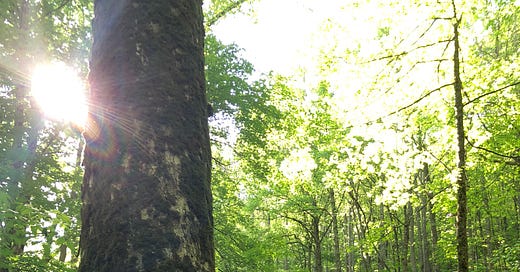




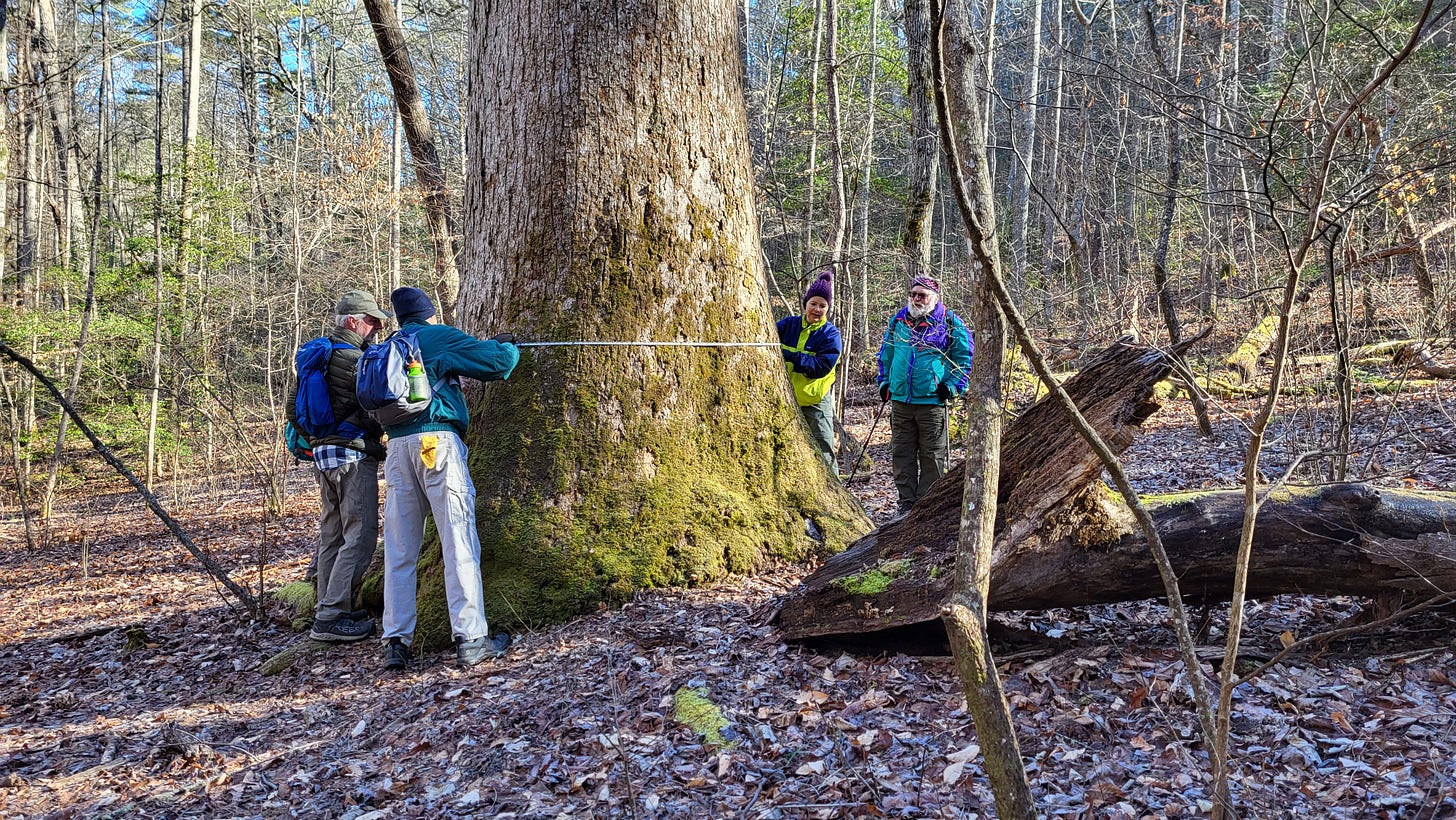
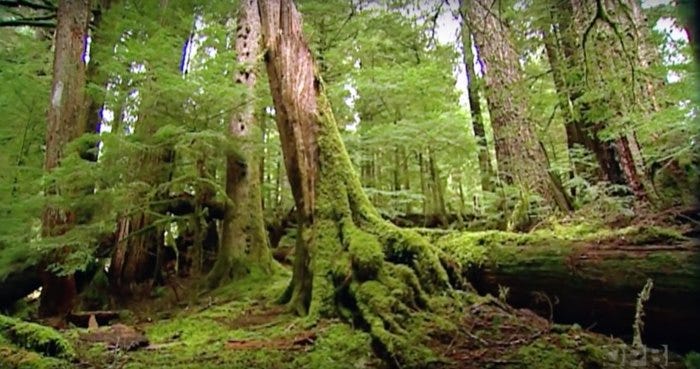
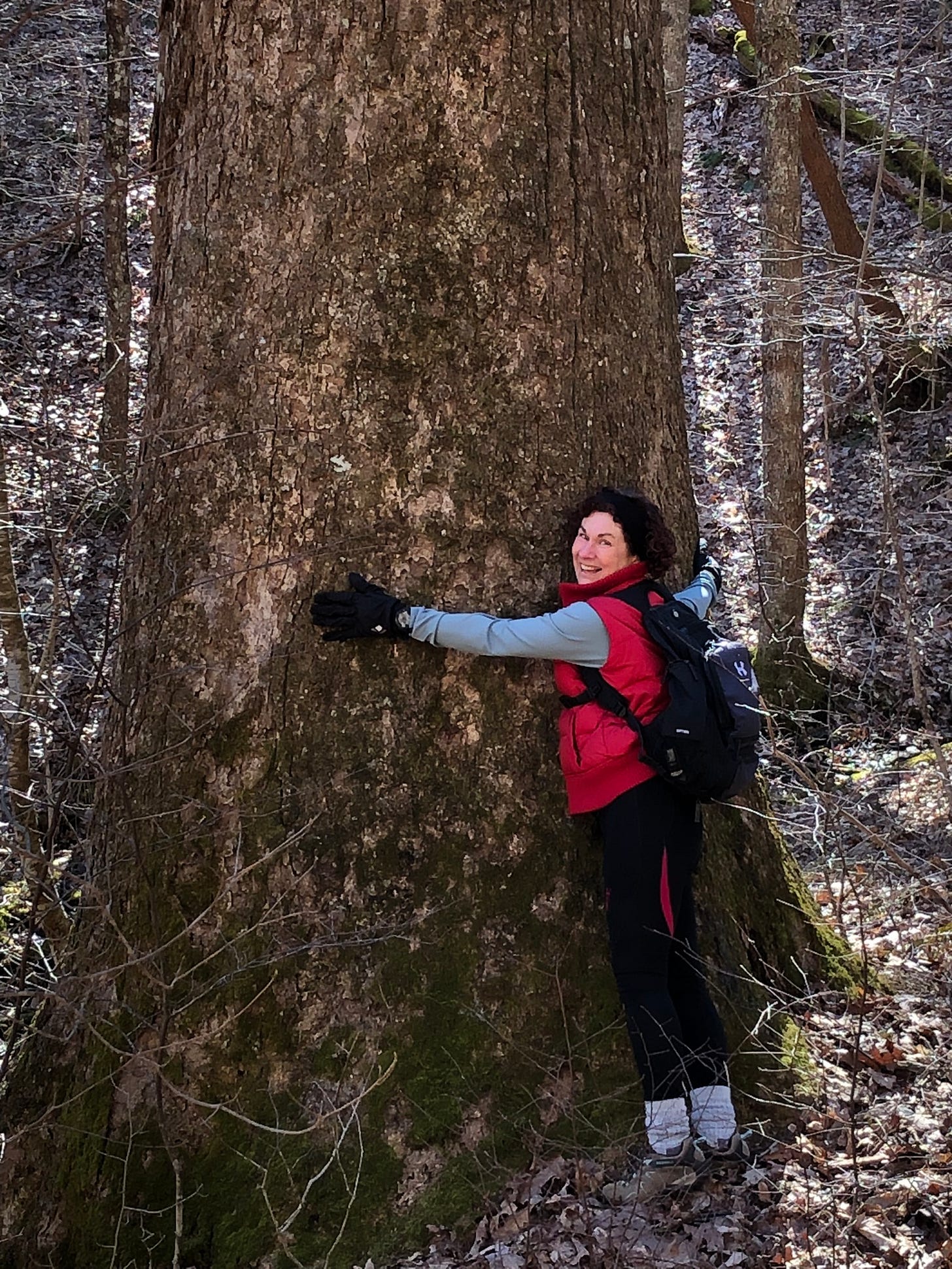
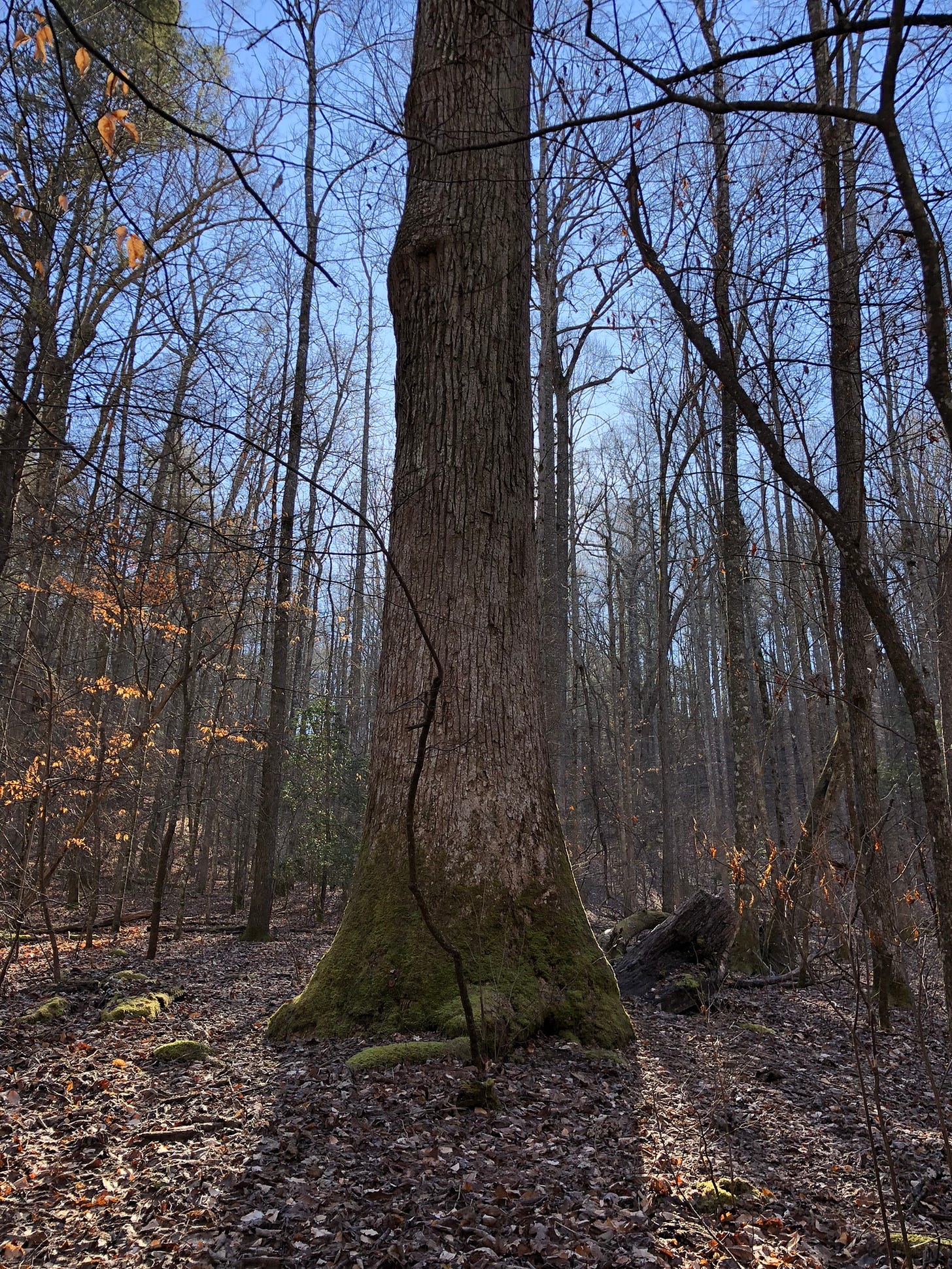

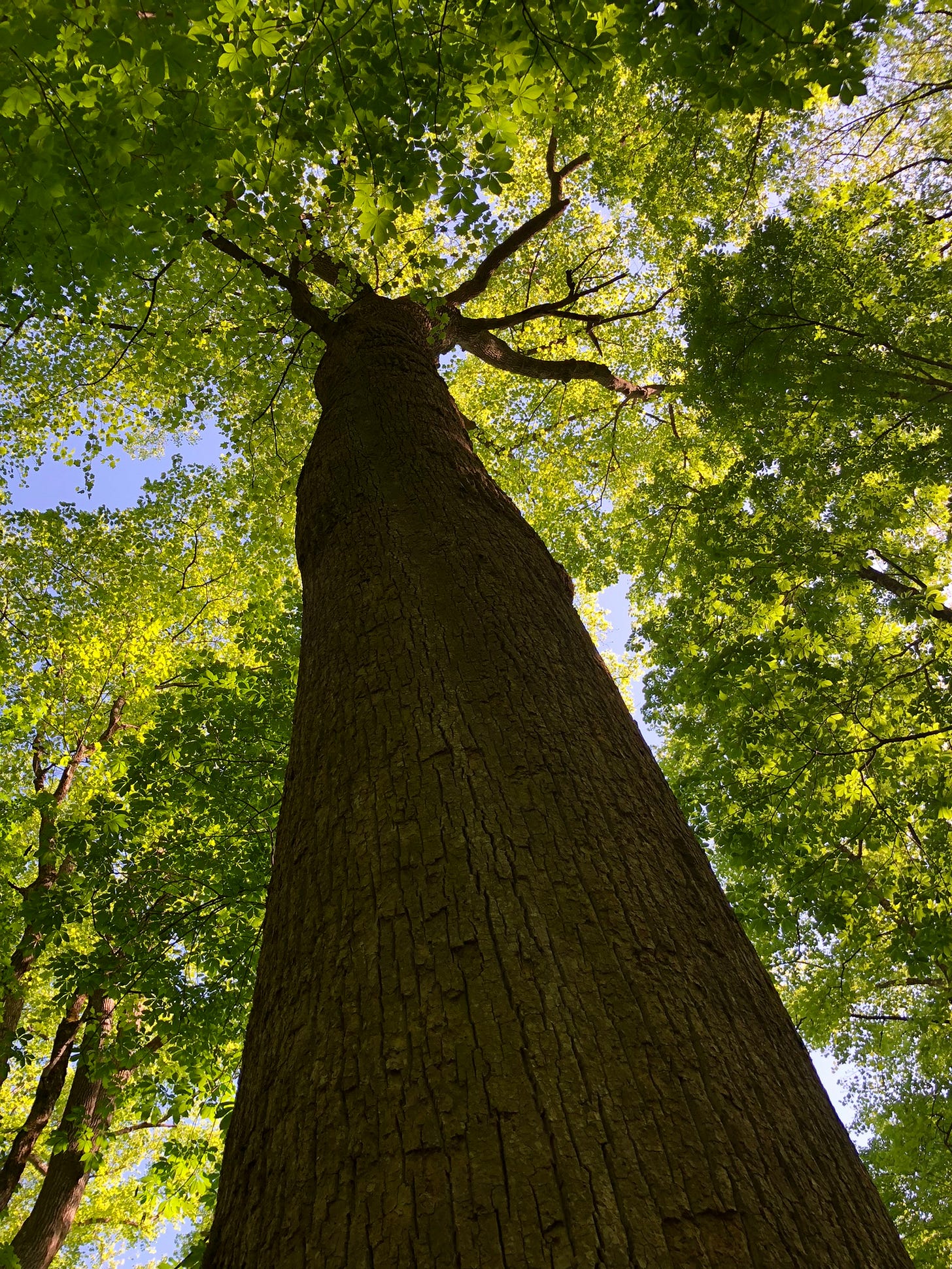
Most forests in New Zealand have had some logging and there's nothing with big trees near me now. But I have spent time in some of New Zealand's old-growth forests. It's truly magical. We do have forests that look like the old-growth forests of your imagination.
Trees, especially the old large growth trees have always had a special place in my heart. If you have never had the opportunity to visit the Edison Museum in Ft Myers, Fl to see the India Banyan tree you should, it is a treat. The tree covers a full acre today. Banyan trees, as you know, throw down roots from the branches as they grow because the branches themselves are larger than most trees. Wonderful article and so happy that there are original growth forests still remaining.